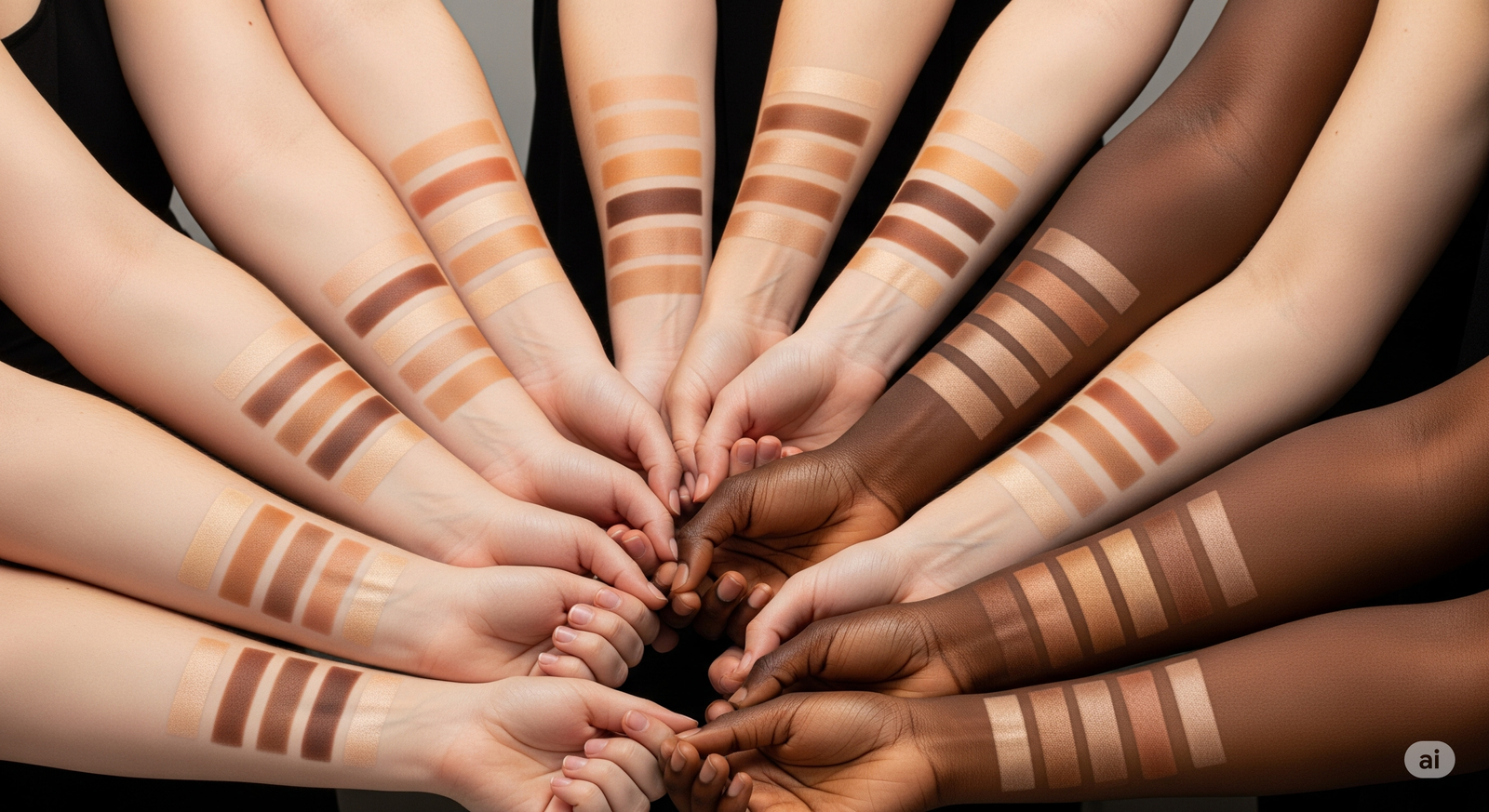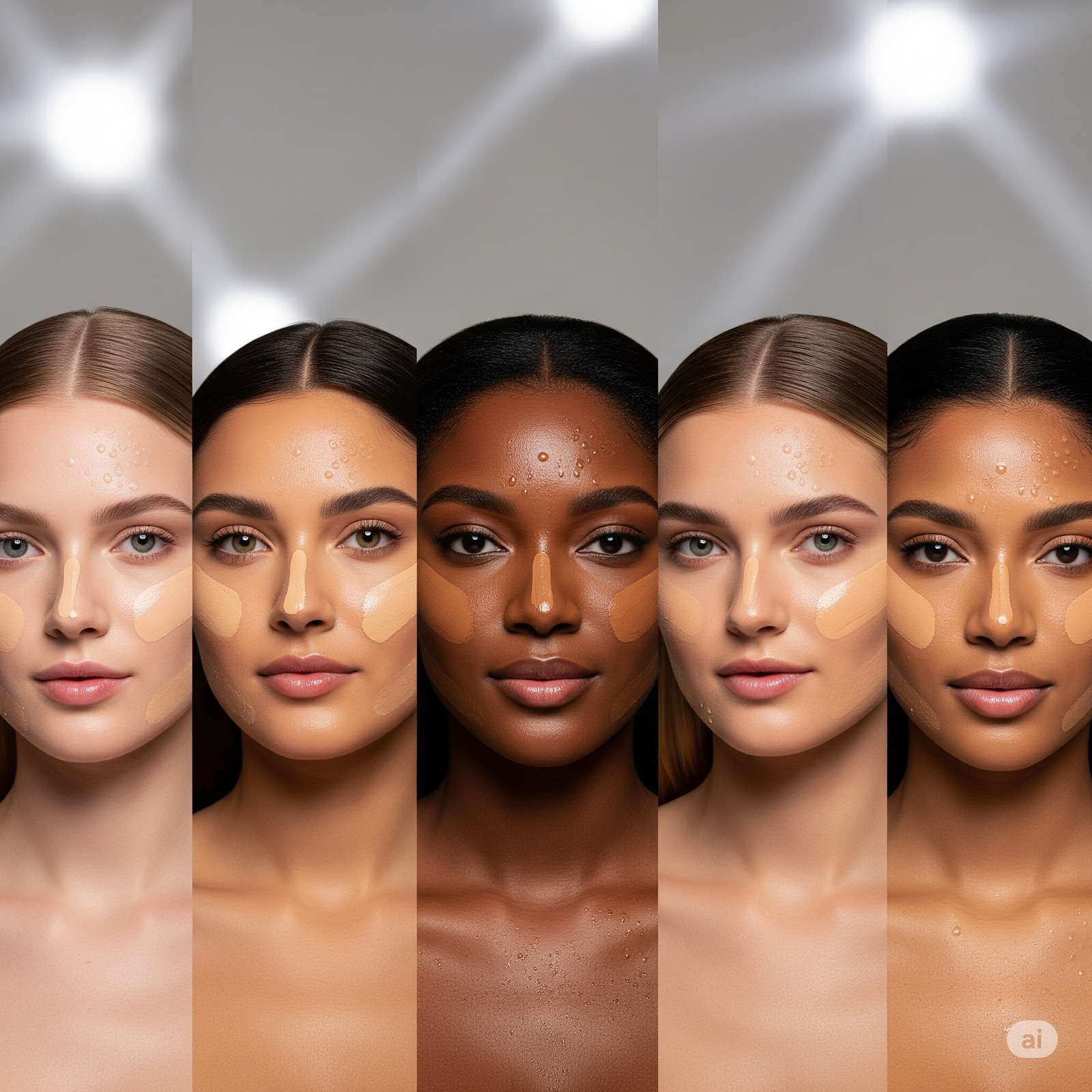Inclusive Beauty Formulas: Customization for All Skin Tones
Inclusive beauty is redefining skincare in India with tone-customized products. Explore personalized skincare trends powered by Admigos inclusivity data.
31 Jul'25
By Niharika Paswan


Inclusive Beauty Formulas: Customization for All Skin Tones
For years, the Indian beauty consumer had to compromise either mixing shades manually or settling for tones too pink, too ashy, or too light. The market, dominated by a limited shade range, did not reflect the full reality of Indian skin diversity. But that’s changing.
Inclusive beauty is no longer just a marketing phrase. Brands are being held accountable for the depth and diversity of their formulas, especially in a country like India, where skin tones range from ivory and wheatish to deep brown. Google Trends shows a steady 60% year-on-year increase in search interest for “foundation for Indian skin tones” and “inclusive shade range” across metro cities. Mintel’s 2025 report also indicates that over 70% of Indian consumers expect brands to reflect their unique skin tone in product offerings. The industry is shifting. And it’s not just a response to consumer demand, it's being powered by data and personalization.
The Rise of Skin Tone Customization in India

India's beauty segment is seeing a measurable shift toward customization. This isn’t just about adding five more shades of foundation. It’s about rethinking product development to suit undertones, climate behavior, and melanin response.
Some of the most innovative approaches we’re seeing include:
- Micro-adjusted undertones: Brands like Kay Beauty and Type Beauty are building ranges with varied undertones neutral, warm, and cool across their deeper shades.
- Personalized pigment tech: Homegrown players like Ilana and Skinkraft use data from skin quizzes or selfies to tweak pigment ratios in custom formulations.
- Climate-tuned formulations: Certain foundations now adapt finish based on humidity, matte where needed, breathable where possible.
- Admigos data shows a growth in consumer satisfaction when personalization includes tone matching with formulation adjustments based on region or season. These aren't just niche experiments, they're becoming expected standards.
How Admigos Tracks the Inclusivity Gap
Admigos works with beauty brands to audit inclusivity not just in shade counts but in consumer experience and sentiment. Our dashboards capture three primary metrics:
- Shade Gaps by Region: Using ecommerce reviews and geotagged sentiment, Admigos identifies underserved tone groups across North, South, East, and West India.
- Custom Match Queries: Tracking the rise in search terms like “custom match foundation” or “my shade not available” helps brands identify where off-the-shelf isn’t enough.
- Engagement Delta in Inclusive Campaigns: Posts featuring inclusive visuals or custom-tone products see engagement which is a signal we measure across Instagram and YouTube campaigns.
Brands using Admigos insights have successfully repositioned launches to be more inclusive, resulting in stronger loyalty and lower return rates. Mintel reveals how personalisation trends are reshaping the beauty and personal care industry, driving product innovation and deeper consumer connections.
Ingredient Sourcing That Matches Skin Needs

Beyond just pigment, inclusive beauty means adjusting ingredient stories. Different skin tones often face different concerns: deeper tones may be more prone to hyperpigmentation, while lighter ones may struggle with redness or sensitivity.
Brands leading in this space are:
- Formulating with niacinamide and licorice root: Known to address pigmentation without irritating deeper skin tones.
- Avoiding ingredients that cause white cast: Such as zinc-heavy sunscreens or flashback-prone powders.
- Sourcing hydrating agents suitable for humid climates: Indian skin often needs lightweight, non-comedogenic hydration that doesn’t clog pores.
Admigos inclusivity data from Q2 2025 shows an uptick in user preference for products mentioning “melanin-safe” or “no white cast”, especially among Gen Z and millennial buyers in Tier 1 and Tier 2 cities. Allies Cosmetics highlights how their shade range is intentionally designed to cater to every skin tone, championing inclusivity in beauty formulation.
Real-Time Feedback and Product Iteration
One of the biggest gaps in past inclusive launches was feedback incorporation. Formulas would stay static even when users repeatedly mentioned poor matching or poor performance on Indian skin. Now, platforms like Admigos let brands monitor ingredient and tone feedback at scale. We enable real-time alerting on:
- “Doesn’t match my tone” reviews
- Photos in low-rating reviews showing mismatch
- Repeat returns due to shade misfit
This loop of live analytics has helped brands like Disguise Cosmetics refine their shade card twice within a single launch cycle, cutting mismatched reviews quarter-over-quarter.
Avoiding Inclusivity Wash

While some brands are taking real action, others still rely on surface-level representation without truly adjusting their formulas. This phenomenon inclusivity wash is being called out faster than ever.
What consumers now expect:
- Proof of performance: Reviews and real skin swatches.
- Scientific logic: Ingredient reasoning specific to tone and concern.
- Consistency across campaigns: Not just token models but actual formulation equity.
Brands that get this right don’t just build trust, they convert better. Admigos found that campaigns with real-tone before-and-after visuals drive higher add-to-cart rates compared to generic product swatches.
What Brands Can Do Next
For beauty brands in India serious about skin tone inclusivity, here’s what works:
- Conduct regional shade audits using tools like Admigos dashboards.
- Reformulate based on user concern clusters, not just shade depth.
- Build modular formulas that can be slightly adjusted per tone or climate.
- Show diverse application visuals, not just product visuals.
- Avoid universal shades instead, market with confidence around specificity.
Conclusion: Inclusivity Is a Formula, Not Just a Face
The age of universal beige is over. Indian consumers are asking for more: more tones, more thought, more proof. Brands that listen, respond, and formulate for India’s real diversity will win not just awareness but conversion.
Admigos is proud to partner with beauty brands committed to inclusive innovation. Through our sentiment tracking, ingredient analysis, and product performance benchmarking, we help make sure every launch feels personal, not performative.
— By Niharika Paswan
AI in Skincare Diagnostics: From Smart Mirrors to Mobile Apps
Explore how AI skincare tools like smart mirrors and apps are transforming festival beauty routines. Backed by Admigos AI insights and real-time user data.

Ingestible Beauty: How Supplement Skincare Drives Festival Glow
Explore how ingestible beauty supplements are powering radiant festival skin from within. Backed by Admigos ingestible analytics and real-time demand trends.
